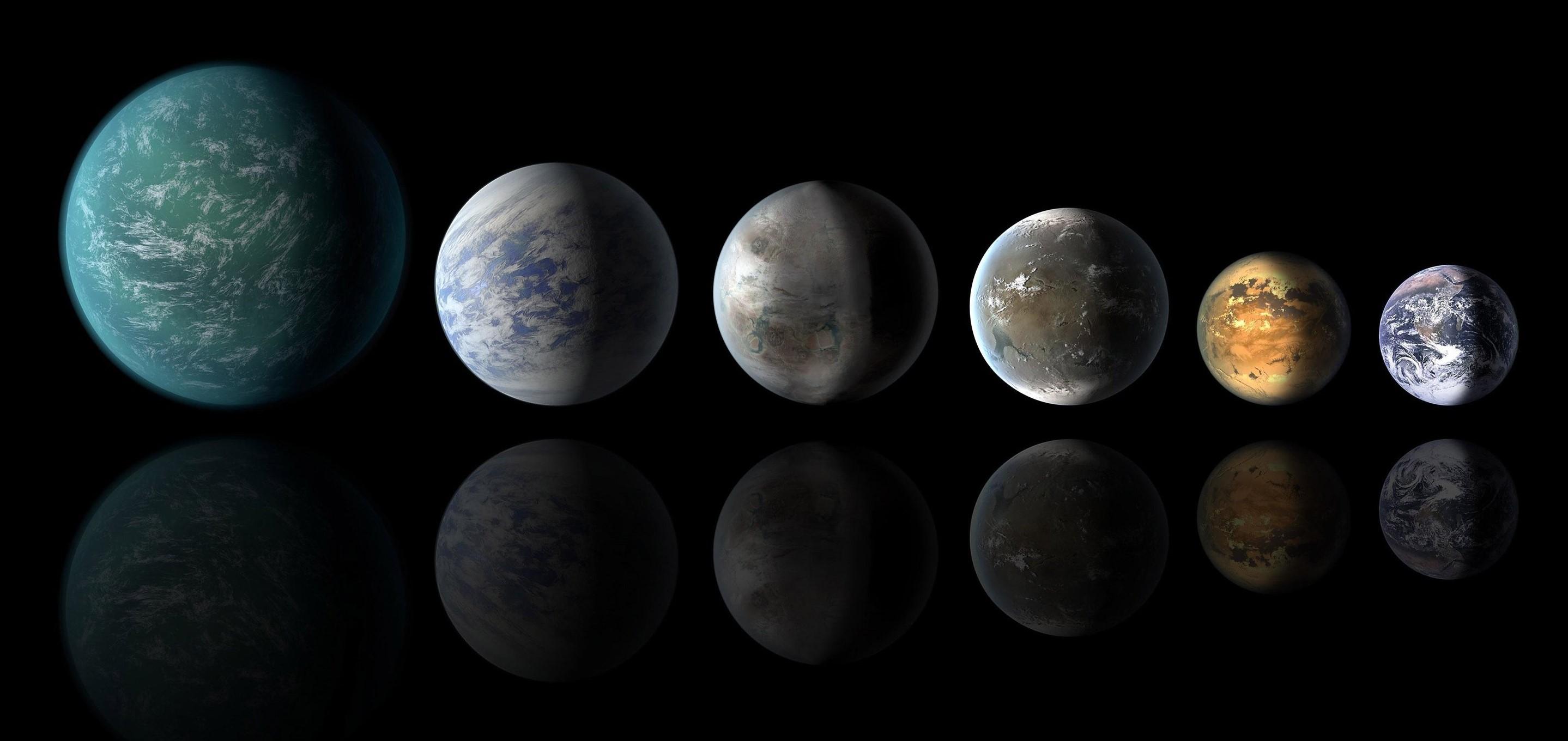
Submitted by Dr C.M. Martin-Jones on Tue, 24/05/2022 - 09:35
Model results presented at this year’s EGU Geophysical Assembly show how the topography of a planet is a key factor determining if it will have oceans of water on or just below its surface, or whether it will be a barren desert.
Scientists describe Earth as an ocean world – it is the only known astronomical body to host surface water needed for life. Although several exoplanets are thought to have the right conditions to host liquid water, scientists still can’t make direct observations at their surface.
Modelling the conditions required for liquid water is one way they can understand the recipe required for planets to become ocean worlds.
Today, third year PhD student Claire Guimond, who is based at Cambridge Earth Science’s Bullard Labs, presents model results from their PhD. The emerging dataset suggests that larger planets are less likely to host extensive oceans, because they have smoother surfaces with shallower basins that cannot hold as much water.
The presence of surface water bodies on planets is partly controlled by their water budget – a balance between the receipt or loss of water from space – but Guimond’s model focusses on another key factor, a planet’s surface topography. The difference between depressions and peaks on a planet’s surface directly controls how much water can be held at the surface.
But, Guimond cautions, it isn’t as simple as making a replica model of Earth. “We don’t want to recreate Earth – we’re interested is simple topography only, none of the complex surface features like continents which are a product of our planet’s unique plate tectonics.”
Instead, Guimond is looking at how deep movements in the interior of planets can impact their capacity for surface water. On Earth, these movements can generate basins and swells several thousands of kilometres, creating a distinctive egg carton structure spanning entire continents.
Guimond finds that these extensive topographic features are less pronounced on planets larger than Earth due to their stronger surface gravity and hotter interiors, and therefore ocean basin capacities decrease with planet mass.
These parameters might help narrow down where to look for possible Earth-like planets. With an increasing level of observational data on exoplanets — from their composition, to their formation and evolution — we are getting closer to finding the right ingredients for life.
Guimond, C. M., Rudge, J., and Shorttle, O.: Water planet thresholds: The topographic scope for land atop a stagnant lid, EGU General Assembly 2022, Vienna, Austria, 23–27 May 2022, EGU22-5975, https://doi.org/10.5194/egusphere-egu22-5975, 2022.
